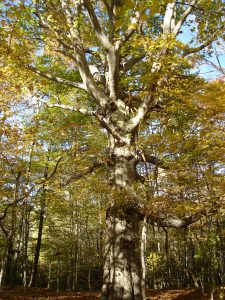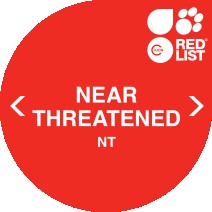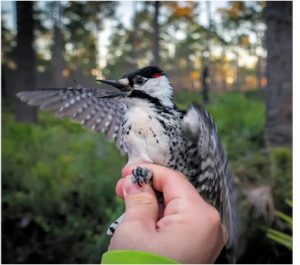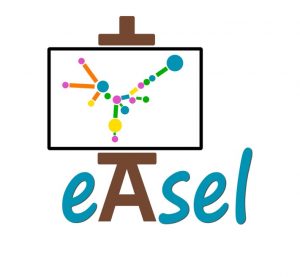Housed within the Institute for Systems Genomics (ISG), the BCG (Biodiversity and Conservation Genomics) program integrates education, research, and community engagement to bridge the gap between genomic innovation and on-the-ground conservation.
Our mission is to:
- Train the next generation of conservation scientists through an inclusive undergraduate and graduate student research and training program focused on genomics-based biodiversity discovery and preservation.
- Engage local, regional, and national partners to translate genomic data into actionable insights for North American species of conservation concern.
- Develop and maintain open-source software that supports the generation of high-quality reference genomes and annotations, ensuring accessible and reproducible conservation genomics workflows.
- Serve as a designated site for the ORG.one program (in partnership with Oxford Nanopore Technologies), providing free sequencing for species listed on the IUCN Red List.
UNDERGRADUATE TRAINING
Trainees: Anastasia Serating, Avery DeSilva, Nicholas Hancox, Deirdre McCrohan, Jenna Kent, Peyton Durant, Tyler Cocchiola
Mentors: Jill Wegrzyn, Rachel O’Neill, Cynthia Webster, Samira Obbu, Meghan Myles, Brandon Lind, Andrew Deierlein
Fagus grandifolia: The BCG trainees have just assembled and annotated the F. grandifolia (American beech) genome, a species native to North America, in an effort to understand the genetic mechanism of beech bark disease (BBD). BBD is caused by a beech scale insect and Neonectria fungus. While many trees across the native range are susceptible to BBD, a small percentage of trees exhibit natural resistance. Presently, students are conducting a differential expression analysis comparing putatively resistant and susceptible individuals to identify the molecular mechanisms of resistance.
Collaborations:
- Boyce Thompson Institute
- Smithsonian Environmental Research Center
- University of Notre Dame
- Chicago Botanical Garden
- Northwestern University

 Dryobates borealis: BCG trainees are actively assembling D. borealis (red-cockaded woodpecker), a species found in the southeastern United States. This woodpecker exclusively excavates cavities in living pine trees, particularly the endangered longleaf pine (which will also be assembled). Habitat loss and fragmentation led to its listing as endangered, but restoration and translocation efforts have since increased population sizes, downlisting it to threatened. A high-quality assembly paired with extensive monitoring at Avon Park Air Force Range in Florida will provide a foundation to further understand population dynamics and long-term recovery.
Dryobates borealis: BCG trainees are actively assembling D. borealis (red-cockaded woodpecker), a species found in the southeastern United States. This woodpecker exclusively excavates cavities in living pine trees, particularly the endangered longleaf pine (which will also be assembled). Habitat loss and fragmentation led to its listing as endangered, but restoration and translocation efforts have since increased population sizes, downlisting it to threatened. A high-quality assembly paired with extensive monitoring at Avon Park Air Force Range in Florida will provide a foundation to further understand population dynamics and long-term recovery.
Collaborations:
- Archbold Biological Station at Avon Park Air Force Range
- Louisiana Department of Wildlife and Fisheries
- Georgia Ecological Services Field Offices

OPEN-SOURCE SOFTWARE
 EASEL (Efficient, Accurate, Scalable Eukaryotic modeLs), a tool for improvement of eukaryotic genome annotation is a Nextflow genome annotation tool that leverages machine learning, RNA folding, and functional annotations to enhance gene prediction accuracy. The next release will include parallelization of AUGUSTUS, optimized feature filtering, additional metrics (e.g., PSAURON, Compleasm), and general bug fixes. For those attending PAG33, a workshop will be presented on Sunday, January 11, 2026 (1:30 PM-3:40 PM).
EASEL (Efficient, Accurate, Scalable Eukaryotic modeLs), a tool for improvement of eukaryotic genome annotation is a Nextflow genome annotation tool that leverages machine learning, RNA folding, and functional annotations to enhance gene prediction accuracy. The next release will include parallelization of AUGUSTUS, optimized feature filtering, additional metrics (e.g., PSAURON, Compleasm), and general bug fixes. For those attending PAG33, a workshop will be presented on Sunday, January 11, 2026 (1:30 PM-3:40 PM).
Developed by: Cynthia Webster, Karl Fetter, Sumaira Zaman, Vidya Vuruputoor, Akriti Bhattarai, Vikesh Chinta and Jill Wegrzyn
Link: https://gitlab.com/PlantGenomicsLab/easel
GENOME SEQUENCING
In addition to the genomes sequenced for the training program (D. borealis and F. grandifolia), Nicole Pauloski has sequenced/is actively sequencing the following species as part of ORG.one:
- University of Connecticut: Torreya taxifolia (Florida Nutmeg Tree), Fraxinus profunda (Pumpkin Ash), Juglans cinerea (Butternut), Pinus palustris (Longleaf Pine), Pinus torreyana (Torrey Pine), Persea borbonia (Redbay), Zyzomys pedunculatus (Central Rock Rat)
- McMaster University: Xenopus longipes (Lake Oku Clawed Frog), Xenopus lenduensis (Lendu Plateau Clawed Frog)
- University of Chicago: Calidris pygmeae (Spoon-billed Sandpiper), Ara ambiguous (Great Green Macaw), Cacatua citrinocristata (Citron Cockatoo), Cacatua haematuropygia (Red-Vented Cockatoo), Amazona auropalliata (Yellow-naped Amazon), Quercus brandegeei (Encino Arroyero), Pyrrhura orcesi (El Oro Parakeet), Cacatua alba (White Cockatoo)
- University of Tennessee: Fraxinus americana (White Ash), Fraxinus quadrangulata (Blue Ash), Fraxinus nigra (Black Ash), Fraxinus pennsylvanica (Green Ash)
- University of Puerto Rico at Mayagüez: Amazona vittata (Puerto Rican Parrot)
- Smithsonian National Zoo & Conservation Biology Institute / NZP: Tapirus bairdii (Baird's Tapir), Oryx dammah (Scimitar-horned Oryx), Hypotaenidia owstoni (Guam Rail), Todiramphus cinnamominus (Guam Kingfisher), Atelopus zeteki (Panamanian Golden Frog)
- National Autonomous University of Mexico: Quercus macdougallii